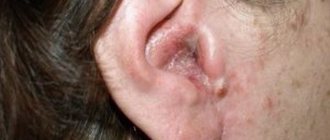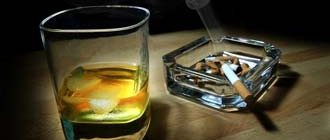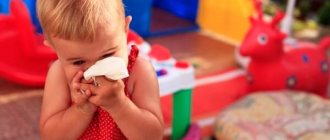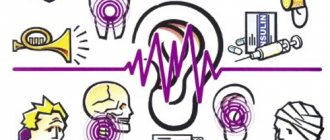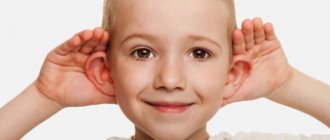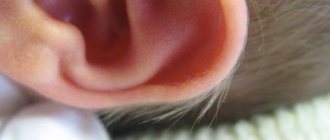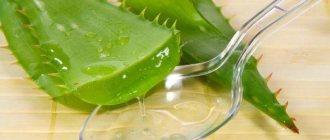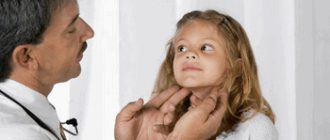Causes
All causes of clicking sounds are divided into two broad categories - physiological and pathological. If this symptom appears rarely enough and does not provoke pain, this indicates the following changes:
- Contraction of the muscles of the middle ear. A sharp contraction of the muscles in the middle ear can occur for no reason. For many at this moment, it seems as if a membrane is clicking. This is caused by the pushing of air towards this area, which resembles a clicking sound in the ear. In this case, discomfort does not arise. There is no need to worry in such a situation.
- Throat spasms. If clicking sounds appear when swallowing, this is due to pronounced contractions of the muscle tissue of the pharynx.
- Structure of the temporomandibular joint. The peculiarities of the joint are such that it can provoke the occurrence of tinnitus.
Various pathologies can also lead to the appearance of clicking sounds. Abnormal factors include the following:
- Otitis media is considered the most common cause of cracking. With inflammatory damage to the auditory analyzer, such sounds appear quite often both in a calm state and during physical activity. If there is ear congestion and noise causes pain, it is necessary to treat the disease. To do this, you need to contact an otolaryngologist.
- Cold pathologies - when they develop, it often seems as if something is cracking in the ears. The appearance of rhinitis is accompanied by the accumulation of mucous secretion in the area of the Eustachian tube. Mucus draining down the back wall of the nasopharynx is also often observed. Often, a cracking sound indicates swelling of the mucous membrane of the throat and nose. Such symptoms are considered secondary. Once the cold is eliminated, it will go away on its own.
- Pharyngitis - this pathology is characterized by swelling of the auditory tube, crackling and discomfort in the nasopharynx.
- Malocclusion - in this case it is caused by a violation of muscle contraction when swallowing and chewing food. Incorrect alignment of teeth leads to increased stress on the muscles and jaws. As a result of these changes, there is a clicking sound in the ear.
- Ear plugs - these formations cause clicking sounds when yawning, swallowing and other movements of the lower jaw.
- Arthritis and arthrosis - with these anomalies, damage to bone tissue and cartilage is observed. This condition is characterized by clicking sounds in the ears. Osteoarthritis provokes damage to the cartilage of the joints. The pathology can be asymptomatic for a long time. Patients have difficulty opening their mouths, may experience cracking joints and clicking sounds behind the ears. As the disease progresses, the lower jaw shifts and the face loses symmetry. With arthritis, the clicking in the ears occurs much earlier. Pain increases when chewing food. The joint swells and the skin becomes redder. Patients often experience symptoms of intoxication.
- Dislocation of the lower jaw is another cause of an unpleasant symptom. The provoking factor is sprain of the ligamentous apparatus and chronic inflammatory damage to the joint capsule. After some time, the head of the lower jaw becomes deformed and the closure of the teeth is disrupted.
- Cervical osteochondrosis – quite often causes unpleasant sounds in the ears. Compression of blood vessels provokes brain hypoxia. This manifests itself in the form of dizziness, blurred vision. Many people experience nausea and sleep disturbances. To eliminate problems, you need to monitor your posture and do therapeutic exercises.
Provoking factors for the problem can be stressful situations, pressure changes, and food allergies. Other causes may include damage to the auditory nerve, abnormal reactions to the use of certain medications, diabetes mellitus, and anemia.
Ear structure
The human ear has a complex structure, but performs only 2 functions: it perceives sound vibrations and provides balance.
The ear includes 3 sections:
- external;
- average;
- internal.
Each department has its own structural features, as well as its own functions. Externally, the ear includes 2 sections: the auricle and the external auditory canal. The concha of the ear is presented in the form of elastic cartilage, covered with skin and having a complex structure. At the bottom there is a lobe, which is highly sensitive to injury. The main function of the auricle is to perceive sounds.
The cartilage of the external auditory canal, no more than 3 cm long, continues the shell. The skin contains sebaceous and sulfur glands. The ears are separated from the middle part by the eardrum. In the middle ear there is:
- tympanic cavity;
- Eustachian tube;
- mastoid.
These areas are interconnected. The tympanic cavity is presented as a space bounded by the membrane and wall of the inner ear. It is located in the place of the temporal bone. In front, the tympanic cavity unites with the nasopharynx, communication is carried out thanks to the Eustachian tube. Air enters the tympanic cavity through the eustachian tube.
The most complex part of the ear is the inner one. It includes the vestibule, the cochlea with the organ of Corti and the semicircular canals filled with fluid. The inner ear performs a vestibular function.
Symptoms
The occasional occurrence of clicking sounds is not usually a reason to visit a doctor. If the crackling is constantly present or is accompanied by noticeable discomfort, you should look for a provoking factor.
If dizziness, noticeable pain, loss of orientation in space, or clicking occurs, you should immediately consult a doctor and determine the causes of this condition.
Before visiting a specialist, you need to assess the nature of the clicks and identify the circumstances that provoke the occurrence of this symptom. Thanks to this, it will be possible to make a correct diagnosis and select treatment much faster.
Diagnostic methods
If there is popping or clicking in the ears, you should contact an otolaryngologist.
A specialist will conduct an inspection. If there are no inflammatory lesions of the ears and nasopharynx, he will refer you to another doctor - a phoniatrist. This is a specialist who deals with various problems of the auditory organ. This doctor determines the functioning of the ears through special tests. If problems are detected, complex therapy will be selected.
If these doctors do not identify problems, there is a need to consult a neurologist. To determine intracranial pressure readings, you may also need the help of an ophthalmologist.
If there are suspicions of damage to the jaw that has led to the appearance of clicks in the organ of hearing, a referral to a dentist or traumatologist may be issued.
How to treat clicking in the ears
Treatment methods directly depend on the cause of the problems. If rhinitis is caused by a virus, no special treatment is required. A large amount of mucus helps to cope with the pathogens of the disease.
The patient's main task is to provide conditions for recovery. To do this, it is recommended to stay in bed, drink a lot and ventilate the room.
If the cause of rhinitis is a bacterial infection, medications should be selected by a doctor. Antibiotics are prescribed depending on the severity of the disease. For allergic rhinitis, contact with allergens must be eliminated. There is also a need to use antihistamines.
If the cause of clicking is otitis media, you should consult a doctor. To cope with a mild form of the disease, antibiotics are not always required. In such a situation, you can wait 3 days. If the patient’s condition does not improve during this period, antibacterial agents should be added. In difficult cases, such medications are prescribed immediately.
When there is inflammation of the mucous membranes of the mouth and throat, it is important to create favorable conditions for recovery. To do this, you need to drink a lot, stay in bed and ensure a flow of fresh air.
If the disease is bacterial in nature, the doctor will assess the need for antibiotics. If you have allergies, you should take antihistamines. You should also be sure to eliminate contact with allergens. In case of traumatic damage to the mucous membrane, agents that have a keratoplasty effect are indicated. If there is a carious lesion, it is necessary to carry out sanitation of the oral cavity.
If the clicking sounds are due to dental reasons, such as improper dentures or misaligned teeth, it is important to eliminate these factors. For this purpose, you should contact an orthopedic dentist. Otherwise, the symptoms of discomfort will only increase. To correct a malocclusion, you will need the help of an orthodontist.
- If your jaw is dislocated, it is strictly forbidden to try to straighten it yourself. This can cause additional damage and increased pain. If your jaw is dislocated, you should consult your dentist. The doctor must set the patient's jaw and apply a bandage. During the rehabilitation period, you should eat only liquid and crushed food.
- If arthritis or arthrosis develops, it is necessary to conduct a comprehensive diagnosis and select adequate therapy. In this situation, consultation with a variety of specialists may be required - infectious disease specialist, dentist, neurologist, surgeon, etc.
To eliminate these pathologies, drug therapy, laser treatment, and surgery can be performed. Treatment will be effective only if you visit a doctor in a timely manner.
- If wax plugs form, you should consult a doctor. You should not get rid of it yourself, as there is a risk of damage to the eardrum. An otolaryngologist diagnoses the presence of a plug using a special device - an otoscope. Removal of the formation is carried out on an outpatient basis.
- With cervical osteochondrosis, you must first of all cope with the pain. To do this, the specialist prescribes non-steroidal anti-inflammatory drugs and analgesics. According to indications, corticosteroid hormones and chondroprotectors can also be used. Often there is a need to perform a novocaine blockade.
- After the acute period has stopped, therapeutic exercises are indicated. Physiotherapy, massage, and exercises on special machines are highly effective. In difficult cases it is not possible to do without surgical intervention.
The appearance of clicking sounds in the ears can indicate a variety of pathologies. To cope with the problem, it is very important to establish the provoking factor and select effective therapy.
ethnoscience
Special compresses and drops are used in treatment. Only these are preparations prepared with one’s own hands. The most effective means include:
- Calamus tincture. It is prepared by infusing grated calamus root (5-10 g) in boiling water (0.5 liters). The product is instilled 1 drop into each ear 2 times a day. The duration of treatment is 1-2 months.
- Birch tar with milk. You will need tar (1 tsp) and milk (1 glass). The product is used internally throughout the day. Duration of therapy is 2 weeks.
- Schisandra tincture. The product eliminates noise problems due to low pressure. Take the tincture 25 drops 3 times a day an hour after meals. Therapy lasts 2-4 weeks.
Before using any traditional medicine, you should consult a specialist. Only a doctor can determine whether a medicine is suitable for treating a particular ailment.
Doctors hear from many patients: “When I chew, my ear crunches.” There are many reasons for this phenomenon. The danger is that the symptom may indicate dangerous pathologies. This phenomenon should not be ignored; only with timely consultation with a doctor can the pathology be eliminated without complications.

